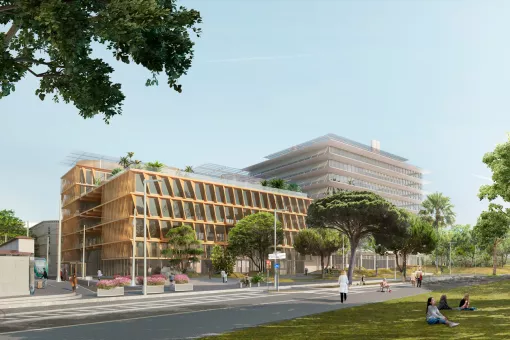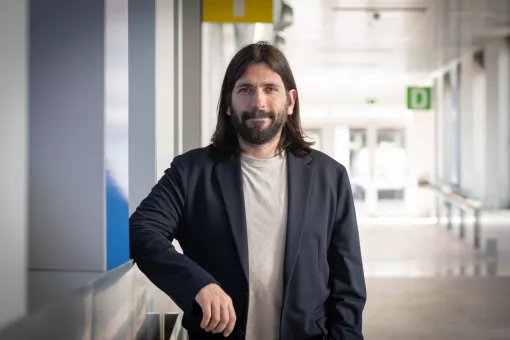Images
Exascale computation, to be available as of 2020, will achieve a rate of one trillion calculations per second, making it 1000 times faster than today’s most powerful supercomputers.
This will lead to a wealth of benefits for science and economy: it will allow scientists to read, process and better understand the genome, produce drugs more cheaply, and create computer simulations of entire organisms, including humans, which will provide an important boost to personalized medicine.
On 18-20 September, experts from the US, Canada, Germany, Switzerland, the UK, Germany and Spain will meet at Barcelona’s Cosmocaixa to discuss the current state and expectations of high-throughput supercomputing, and its impact on European research and industry.
Simulation, together with theory and experimentation, has become the third pillar of science. It can be used to study phenomena at the subatomic level all the way up to entire human beings.
Computing experts predict that the supercomputers of the future, based on exascale technology, will be able to achieve a rate of one trillion calculations per second, making them 1000 times faster than the quickest machines available today. This will give a powerful boost to research in areas such as medicine, as it will allow scientists to perform simulations of cells and living organisms, improving their understanding of diseases and their treatment, and leading to the development of more effective and cheaper drugs.
Researchers believe that exascale calculation will be available as of 2020. In order to meet this goal, scientists and engineers are tackling remarkable challenges, such as how to create software powerful enough to crunch enormous quantities of data, and above all, how to reduce the staggering electricity needs of these supercomputers.
Tihane-2, in China, is currently the world’s most powerful supercomputer, able to make 30,700 billion calculations per second. In order for it to work on exascale technology, it would need 1.6 gigawatts of electricity, approximately the equivalent of the supply for 2,000,000 homes.
On 18-20 September, international experts in high-throughput computing and biomedicine will meet in Barcelona’s Cosmocaixa to debate the current state and expectations of exascale technology, discuss technical aspects of simulation, including that of humans, its impact on research and the biotechnology and pharmaceutical sectors, and decide on the actions that public and private institutions must take to further develop this technology.
The first day will be dedicated to discussions on the current strategy of the European Union to foster exascale computation, as well as investments in disruptive technologies and the role that they play in tackling big scientific and social challenges as well as in industry, to innovate products and services.
The second day, Thursday 19, will focus on supercomputation as it applies to living organisms and multiscale simulation. Today it is possible to read the genome of more than 100 people in one week. Genomics has become a powerful tool to treat diseases. Over the coming years, digital models of cells and living organisms with different levels of complexity may be created, to the benefit of fields such as personalized medicine.
On the Thursday evening, Cosmocaixa will host an open symposium for the scientific communities working on computation and life sciences, in which the technical aspects of multiscale simulation will be discussed as well as the current state and future expectations for human simulation.
The last day, 20 September, will take a look at how exascale technology can revolutionize the pharmaceutical industry, allowing for example, the scanning of one billion compounds –instead of the current limit of 100,000 molecules– and a reduction in the use of animals in experiments, which currently costs between 1,300 and 9,500 billion euros annually. This would bring enormous benefits to the European economy which produces nearly 40% of the drugs on the market. It will also reduce the costs of developing each new drug, which currently averages at 115 million euros.
The scientific organizer of the conference is Dr. Modesto Orozco, group leader in the Molecular Modeling and Bioinformatics Laboratory at IRB Barcelona, and Director of Life Sciences at BSC-CNS. He is an expert in the theoretical study of biological systems.
The conference “Towards in silico humans: A challenge for exascale computing area” is organized by B·Debate, an initiative of Biocat and Obra Social ‘la Caixa’, in collaboration with the joint programme in computational biology of the Barcelona Supercomputing Center and the Institute for Research in Biomedicine (IRB Barcelona)
A detailed programme of B·Debate “Towards in silico humans: A challenge for exascale computing area”
About IRB Barcelona
The Institute for Research in Biomedicine (IRB Barcelona) pursues a society free of disease. To this end, it conducts multidisciplinary research of excellence to cure cancer and other diseases linked to ageing. It establishes technology transfer agreements with the pharmaceutical industry and major hospitals to bring research results closer to society, and organises a range of science outreach activities to engage the public in an open dialogue. IRB Barcelona is an international centre that hosts 400 researchers and more than 30 nationalities. Recognised as a Severo Ochoa Centre of Excellence since 2011, IRB Barcelona is a CERCA centre and member of the Barcelona Institute of Science and Technology (BIST).





